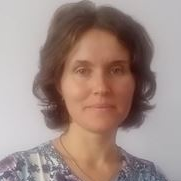Geometric Function Theory and Applications―Festschrift for Grigore-Stefan Salagean's 75th Birthday
A special issue of Mathematics (ISSN 2227-7390). This special issue belongs to the section "Algebra, Geometry and Topology".
Deadline for manuscript submissions: 31 May 2025 | Viewed by 1623
Special Issue Editors
Interests: complex analysis; geometric function theory; special functions
Special Issues, Collections and Topics in MDPI journals
Interests: complex analysis; geometric function theory; integral operators
Special Issues, Collections and Topics in MDPI journals
Special Issue Information
Dear Colleague,
This Special Issue is dedicated to Prof. Grigore-Stefan Salagean’s on the occasion of his 75th birthday.
Professor Salagean worked at Babes-Bolyai University, focusing on complex analysis. He has taught many doctoral and postdoctoral students.
Professor Salagean is one of the most distinguished professors in the field of complex variables. He has published books; monographs; edited volumes; book chapters; papers in international conference proceedings; and articles in various peer-reviewed international scientific research journals. He has also contributed forewords and prefaces to many books and journals.
The aim of this Special Issue is to bring together leading experts alongside young researchers studying topics related to univalent and geometric function theory and to present their recent research to the mathematical community.
This Special Issue, devoted to the topic of the “Geometric Function Theory and Applications”, will collate the latest research achievements of scholars studying the complex-valued functions of one or several variables.
Geometric function theory (GFT) is one of the most important branches of complex analysis. Its purpose is to relate the analytic properties of conformal maps to the geometric properties of their images, and it has many applications in various fields of mathematics, including special functions, dynamical systems, analytic number theory, fractional calculus, and probability distributions.
The purpose of this Special Issue is to bring together original research and review articles focusing on the latest developments in this research area and on applications of geometric function theory within other fields of research. Such articles not only provide new methods and results but may also have a great impact on the concept of symmetry.
Our goal is to promote and reinforce continued efforts to produce new results in these areas.
Topics that are invited for submission include (but are not limited to) the following:
- Theory-differential and integral operators
- Univalent and multivalent functions
- Analysis of metric spaces
- Spaces of analytic and meromorphic functions
- Value distribution theory
- Differential subordinations and superordinations
- Applications of special functions in geometric function theory
- Quasi-conformal mappings
- Entire and meromorphic functions
- Fuzzy differential subordinations and superordinations
- Riemann surfaces
- Generalized function theory
- Bi-complex variable theory
- Applications of quantum calculus in geometric function theory
- Approximation theory
- Universal functions
- Harmonic univalent functions
- Geometric function theory in several complex variables
Dr. Luminita-Ioana Cotirla
Prof. Dr. Valer-Daniel Breaz
Guest Editors
Manuscript Submission Information
Manuscripts should be submitted online at www.mdpi.com by registering and logging in to this website. Once you are registered, click here to go to the submission form. Manuscripts can be submitted until the deadline. All submissions that pass pre-check are peer-reviewed. Accepted papers will be published continuously in the journal (as soon as accepted) and will be listed together on the special issue website. Research articles, review articles as well as short communications are invited. For planned papers, a title and short abstract (about 100 words) can be sent to the Editorial Office for announcement on this website.
Submitted manuscripts should not have been published previously, nor be under consideration for publication elsewhere (except conference proceedings papers). All manuscripts are thoroughly refereed through a single-blind peer-review process. A guide for authors and other relevant information for submission of manuscripts is available on the Instructions for Authors page. Mathematics is an international peer-reviewed open access semimonthly journal published by MDPI.
Please visit the Instructions for Authors page before submitting a manuscript. The Article Processing Charge (APC) for publication in this open access journal is 2600 CHF (Swiss Francs). Submitted papers should be well formatted and use good English. Authors may use MDPI's English editing service prior to publication or during author revisions.
Keywords
- geometric function theory
- complex analysis
- special functions
Benefits of Publishing in a Special Issue
- Ease of navigation: Grouping papers by topic helps scholars navigate broad scope journals more efficiently.
- Greater discoverability: Special Issues support the reach and impact of scientific research. Articles in Special Issues are more discoverable and cited more frequently.
- Expansion of research network: Special Issues facilitate connections among authors, fostering scientific collaborations.
- External promotion: Articles in Special Issues are often promoted through the journal's social media, increasing their visibility.
- e-Book format: Special Issues with more than 10 articles can be published as dedicated e-books, ensuring wide and rapid dissemination.
Further information on MDPI's Special Issue polices can be found here.






